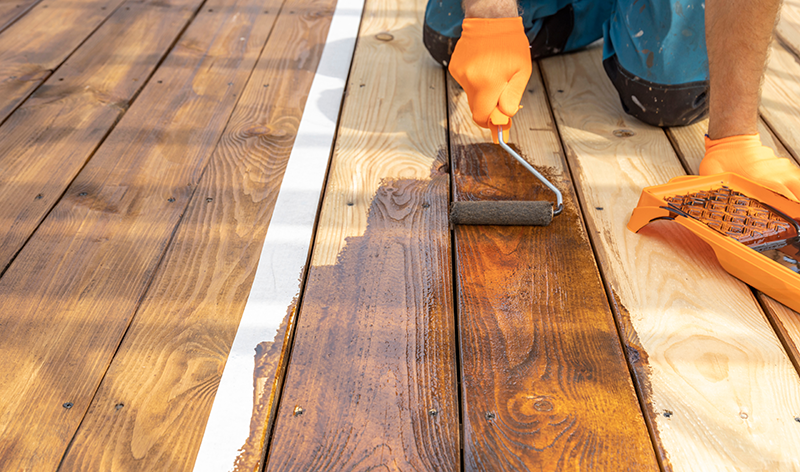
Treating wood with linseed oil
Boiled linseed oil, also known as linseed oil, is a natural product extracted from the seeds of the flax plant. Thanks to a special heating process that adds drying agents (siccatives), this oil dries faster than raw linseed oil. This makes it a popular finish for woodwork, both indoors and outdoors.
Boiled linseed oil creates a durable, moisture-resistant finish that helps protect wood from the elements while enhancing its warm, natural look.
Below you will find a comprehensive guide to treating wood with boiled linseed oil.
Preparation
Good preparation is essential for a beautiful and lasting result:
- Work in a well ventilated area and wear protective gloves if necessary.
- Make sure the surface is clean, dry and free of dust, grease and old paint .
- For new wood: lightly sand for better adhesion.
- For existing wood: first remove old layers of oil or paint and sand to a smooth surface.
Supplies
- Boiled linseed oil (linseed oil)
- Sandpaper (medium and fine)
- Clean, lint-free cloths or rags
- Brush or paintbrush
- Possibly a stirring rod
- Protective gloves
How much linseed oil do I need?
- For wood: approximately 1 litre for 8–15 m² .
- Porous wood absorbs more oil than dense woods.
- For metal or concrete, 1 litre can typically cover up to 15 m² .
Applying Linseed Oil
- Stir the oil well before use, so that the consistency is even.
- Apply a thin coat with a cloth or brush, following the direction of the wood grain.
- Do not use an excess amount; the oil must be absorbed into the wood and not form a visible layer.
- Let the layer dry for at least 24 hours . This may take longer depending on temperature and humidity.
- Check the surface : if it is dull or dry, an additional coat may be necessary.
- Sand lightly with fine sandpaper between coats and remove any dust.
- Then apply another thin layer .
- Two to three coats are usually sufficient for a deep, protective finish.
NOTE: Never apply too much linseed oil, it should not form a layer. So make sure that there is no linseed oil on the wood, but that everything is absorbed into the wood.
Aftercare and maintenance
- Keep treated surfaces clean with a slightly damp cloth.
- For surfaces that are used intensively or exposed to sun and rain:
- Maintain annually by applying a new coat of linseed oil.
Tips and safety precautions
- No Layer Formation : Make sure that the linseed oil is absorbed into the wood and does not form a layer on the surface.
- Store Cloths Safely : Cloths that have been in contact with linseed oil may spontaneously combust. Allow them to dry unfolded or store them in a bucket of water.
- Storage of Materials : Store the oil and used materials in a safe place, away from direct sunlight and heat sources.
Conclusion
Treating wood with boiled linseed oil is a natural way to help protect surfaces from moisture and weather conditions. By properly preparing the wood and carefully applying and allowing the linseed oil to soak in, you can significantly extend the life of your wooden objects. In addition, linseed oil provides a beautiful, warm finish that emphasizes the natural beauty of the wood. It is important to observe safety precautions, such as allowing cloths to dry thoroughly to prevent spontaneous combustion.
Linseed oil is a good product for preserving wood, metal and concrete

